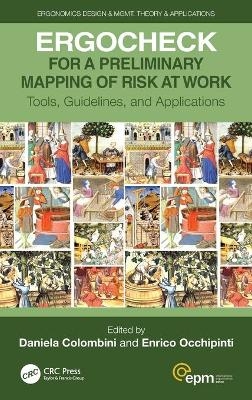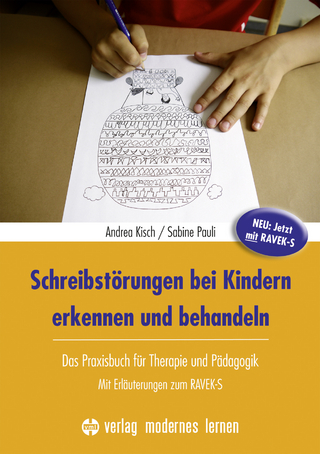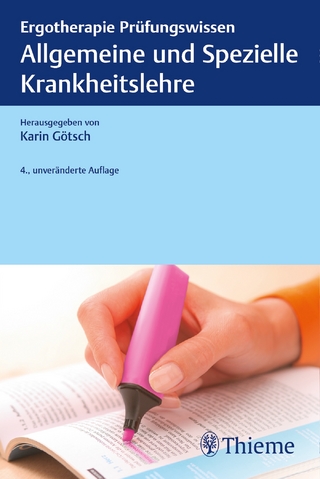
ERGOCHECK for a Preliminary Mapping of Risk at Work
CRC Press (Verlag)
978-0-367-23009-8 (ISBN)
One of the latest developments being pursued by the World Health Organization (WHO) and other international organizations (ILO, ISO), in relation to preventing work-related diseases and disorders, concerns the creation of "toolkits" and, within them, of simple tools.
This book suggests a methodology and a comprehensive simple tool (ERGOCHECK, downloadable for free from the website www.epmresearch.org) for bringing together various potential risk factors to undertake a preliminary mapping of discomfort/danger in the workplaces and to assess consequent priorities for prevention, especially (but not only) in small and very small businesses.
The tool is primarily designed to be used by employers, OSH (Occupational Health and Safety) operators and trade union representatives, but it may also be useful for occupational medical staff conducting periodical inspections and drafting health surveillance protocols, and for supervisory bodies (labor inspectors) conducting inspections in the workplace needing to rapidly detect potentially dangerous situations requiring specific preventive interventions.
Daniela Colombini is a certified European ergonomist and a senior researcher at the Research Unit Ergonomics of Posture and Movement, Milan, where she developed methods for the analysis, evaluation and management of risk and damage from occupational biomechanical overload. She was a professor at the School of Specialization in Occupational Medicine in University of Milan and University of Florence. She is the coauthor of the OCRA method (EN 1005-5 standard and ISO 11228-3). She is the founder and president of the EPM International Ergonomics School (EPMIES). She has been working with accredited native teachers in countries such as the USA, France, India, Spain, Chile, Colombia, Guatemala, Costa Rica, Brazil and other South American countries. She is a member of the Ergonomics Committee of UNI working in the international commissions of European Committee for Normalization (CEN) and International Organization for Standardization (ISO).
Enrico Occhipinti is a certified European ergonomist. He is a professor at the School of Specialization in Occupational Medicine in University of Milano, and the director of the Research Unit Ergonomics of Posture and Movement (EPM) at Fondazione Don Gnocchi ONLUS-Milano. He developed and coauthored the OCRA method. He is a member and has been a coordinator (up to 2012) of the Technical Committee on Prevention of Musculoskeletal Disorders of the International Ergonomics Association (IEA), and represents Italy in international commissions of the CEN and the ISO dealing with ergonomics and biomechanics.
Daniela Colombini is a certified European Ergonomist and a senior researcher at the Research Unit Ergonomics of Posture and Movement, Milan, where she developed methods for the analysis, evaluation and management of risk and damage from occupational biomechanical overload. She was Professor at the School of Specialization in Occupational Medicine in University of Milan and University of Florence. She is the coauthor of the OCRA method (EN 1005-5 standard and ISO 11228-3). She is founder and President of the EPM International Ergonomics School EPMIES. She has been working with accredited native teachers in countries such as USA, France, India, Spain, Chile, Colombia, Guatemala, Costa Rica, Brazil and other South America Countries. She is a member of the Ergonomics Committee of UNI working in the international commissions of CEN and ISO. Enrico Occhipinti is a Certified European Ergonomist. He is professor at the School of Specialization in Occupational Medicine, University of Milano and director of the Research Unit Ergonomics of Posture and Movement (EPM) at Fondazione Don Gnocchi ONLUS-Milano. He developed and co-authored the OCRA method. He is a member and has been coordinator (up to 2012) of the Technical Committee on Prevention of Musculoskeletal Disorders of the International Ergonomics Association (IEA) and represents Italy in international commissions of the European Committee for Normalization (CEN) and the International Organization for Standardization (ISO) dealing with ergonomics and biomechanics.
Preface. Acknowledgement. Editors. Contributors. 1. Introduction and Aim. 2. Reference Sources. 3. Pre-mapping of Risk Factors for Occupational Health and Wellbeing: General Structure of ERGOCHECK. 4. First-Level Pre-mapping: Key Enters and General Overview. 5. Second-Level Pre-mapping (Quick Assessment) for Studying Biomechanical Overload. 6. Second-Level Pre-mapping (Quick Assessment) for the Preliminary Study of Exposure to Chemical Agents and Particulate. 7. Second-Level Pre-mapping (Quick Assessment) for the Preliminary Study of Exposure to Biological Agents. 8. Second-Level Pre-mapping (Quick Assessment) for the Preliminary Evaluation of Work-Related Stress. 9. Summary of Pre-mapping Evaluations by Homogeneous Group and Manufacturing Unit. 10. Examples of ERGOCHECK Spreadsheets. 11. Using ERGOCHECK for Pre-mapping Risk: Application Examples. 12. Pre-mapping in an Agricultural Setting: Presentation of a Specific ERGOCHECK Model. 13. Conclusions. References. Index.
| Erscheinungsdatum | 15.04.2020 |
|---|---|
| Reihe/Serie | Ergonomics Design & Mgmt. Theory & Applications |
| Zusatzinfo | 9 Tables, black and white; 121 Line drawings, black and white; 52 Halftones, black and white; 178 Illustrations, black and white |
| Verlagsort | London |
| Sprache | englisch |
| Maße | 156 x 234 mm |
| Gewicht | 603 g |
| Themenwelt | Medizin / Pharmazie ► Physiotherapie / Ergotherapie ► Ergotherapie |
| Naturwissenschaften ► Chemie ► Technische Chemie | |
| Technik | |
| Wirtschaft | |
| ISBN-10 | 0-367-23009-7 / 0367230097 |
| ISBN-13 | 978-0-367-23009-8 / 9780367230098 |
| Zustand | Neuware |
| Haben Sie eine Frage zum Produkt? |
aus dem Bereich


